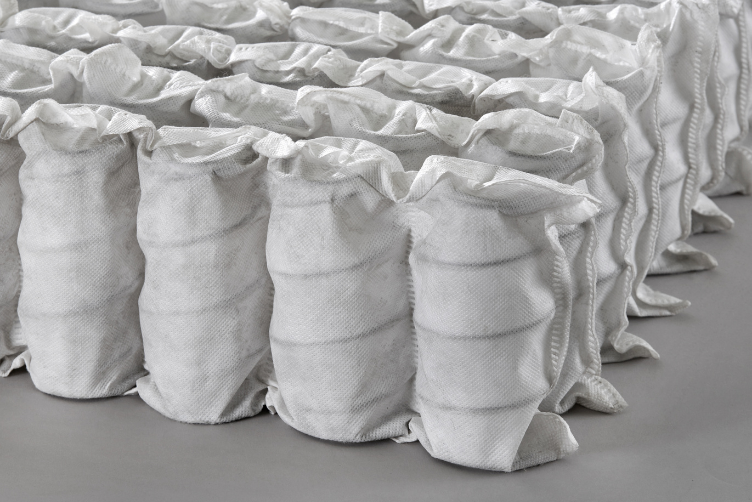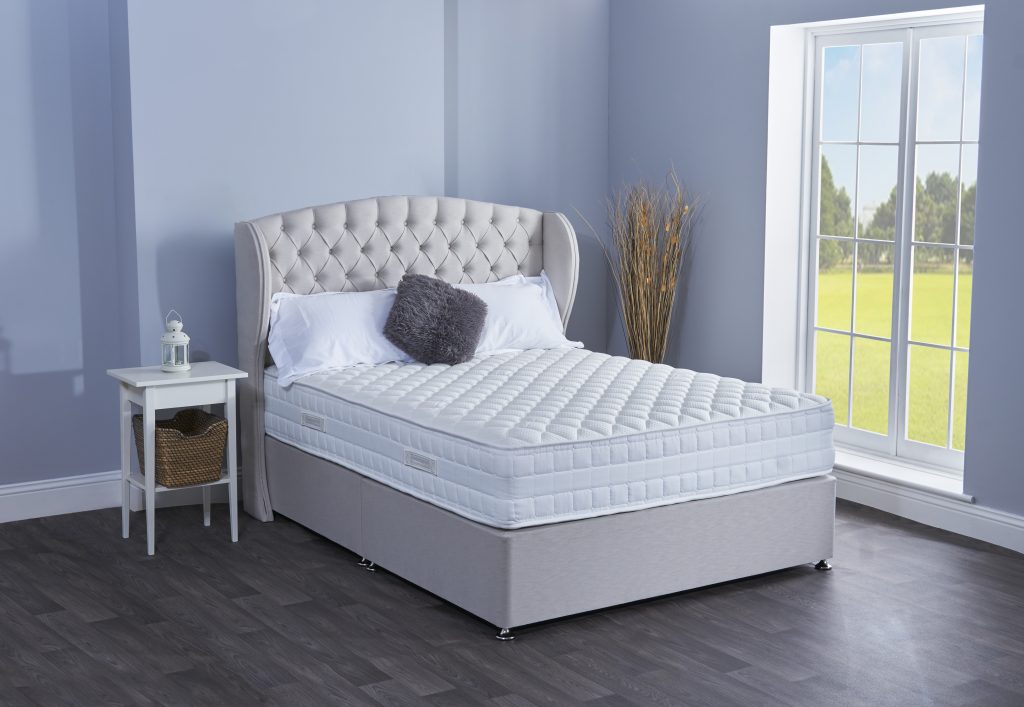
When it comes to choosing a mattress, it’s easy to get overwhelmed by the plethora of options available in the market. From different types of springs to various fillings, each component plays a crucial role in determining the comfort, support, and overall quality of your sleep experience. In this blog, we’ll explore the different fillings commonly found in mattresses and understand their purposes.
Pocket Springs

Pocket springs, also known as pocketed coils, are individually wrapped coil springs that are stitched into fabric pockets. These springs move independently, which means they can contour to the shape of your body more effectively, providing targeted support and reducing motion transfer. This makes pocket spring mattresses ideal for couples or individuals who share a bed.
Bonnel Springs

Silk: Silk is a luxurious filling material known for its softness and hypoallergenic properties. Silk can help regulate body temperature by wicking away moisture, keeping you cool and comfortable throughout the night.
Wool: Wool is a natural filling material that offers excellent temperature regulation properties. It can help keep you warm in the winter and cool in the summer. Additionally, wool is moisture-wicking and resistant to dust mites, making it a great option for allergy sufferers.
Cashmere: Cashmere is another premium filling material known for its softness and insulating properties. Cashmere can add a luxurious feel to a mattress while providing warmth and comfort.
Synthetic Fillings: Synthetic fillings, such as polyester or polyurethane foam, are often used as more affordable alternatives to natural materials. While synthetic fillings may lack the breathability and eco-friendliness of natural materials, they can still provide adequate comfort and support.
Gel Foam: Gel foam is a type of memory foam infused with gel particles to enhance breathability and cooling properties. Gel foam mattresses are designed to dissipate body heat more effectively than traditional memory foam, providing a cooler sleep surface.
Latex: Latex mattresses are made from natural or synthetic latex foam. Latex offers excellent support and pressure relief, contouring to the body’s curves while maintaining bounce and responsiveness. Natural latex is also hypoallergenic and resistant to dust mites and mold.
Memory Foam: Memory foam mattresses are renowned for their ability to contour to the body’s shape, providing personalized support and pressure relief. Memory foam mattresses can help alleviate pain and discomfort by distributing weight evenly and reducing pressure points.

In conclusion, the various fillings used in mattresses serve different purposes, from providing support and comfort to enhancing breathability and temperature regulation. When choosing a mattress, consider your personal preferences, sleeping position, and any specific health concerns to find the right combination of fillings that will ensure a restful night’s sleep. Whether you prefer the plushness of silk and cashmere or the contouring, cooling support of gel foam and latex, Quercus Home Furniture has a mattress filling to suit your needs and preferences.
Still confused? Ask us. We have years of experience in recommending the best mattress for our customers. Gimmicky computer programmes in expensive chain stores are no substitute for experience and a personal touch. Have a look at a selection of our best selling mattresses here, or better still, pop in to our showroom at 3 Market Street, Heywood, to lie on a few and see what suits.
What mattress would you recommend for sciatica pain
Thank you
Hi Samantha. Great question and one I feel doubly qualified to answer, as I suffer from sciatica too. I would recommend a medium/firm pocket spring mattress with a latex or gel foam top layer, such as our Coniston or Lutterworth mattresses. Look at 1500 or 2000 pocket springs, depending on whether you are a side or back sleeper (firmer is better for back sleepers, medium-firm for side sleepers). The layer of blue gel foam, or natural latex on top provides a comfortable pressure-relieving layer to soften the firmness of the springs. I wouldn’t recommend memory foam as it tends to cause overheating. Gel foam and latex both have excellent heat dissipating properties that memory foam doesn’t. Personally, I sleep on a 1500 spring Coniston gel foam mattress and it has made a real difference to my sciatica.